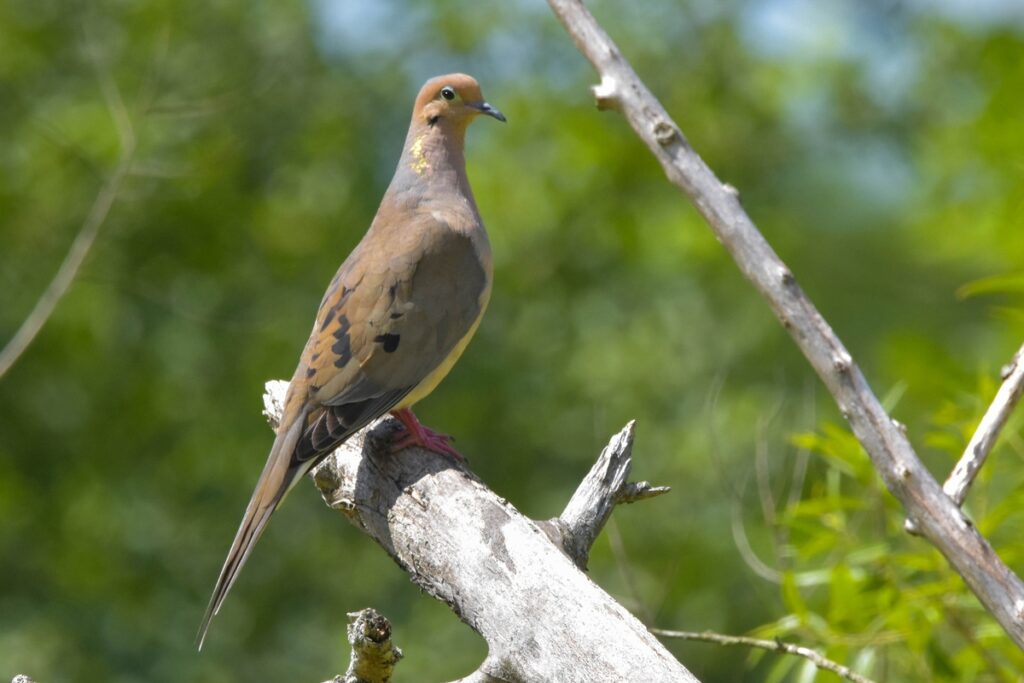
10 Common Urban Birds in the Las Vegas Valley
Have you met your feathered neighbors? Whether they’re walking on the sidewalk, perching on walls and houses, flitting around trees, or visiting your garden, birds are one of the most accessible ways to learn about nature in the Las Vegas Valley. We may not have traditional seasons, but since birds cue into changes in sunlight to start singing for spring, they can connect us to the seasons, sometimes better than our temperatures. Here are the most common birds we share our city with that you can find all year long:
American Coot
The American coot is a common waterfowl species at Las Vegas parks with water. Although it is often swimming alongside mallards, the American coot is no duck. They’re in another family of birds altogether, and a key difference is found in their feet. Coots don’t have webbed feet like ducks but have long finger-like lobes of skin that help them kick underwater. Coots are often very territorial, chasing each other over the best spot to eat algae, pondweeds, insects, and even fish. See if you can notice how much they’re kicking underwater to swim and chase each other compared to the graceful glide of a duck.
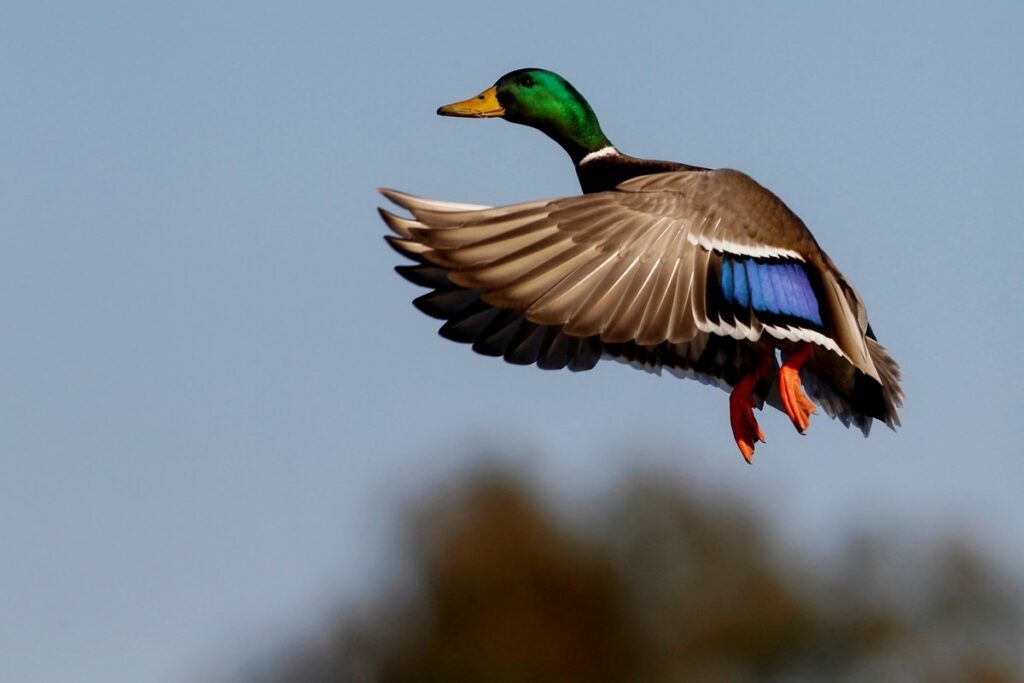
American Mallard
Another common local waterfowl, American mallards are probably the bird you imagine when you think of a duck, with males sporting distinctive dark green heads and bright yellow bills. Females are different shades of brown, expertly camouflaged to blend in with the shoreline so that they can sit on their eggs without drawing attention from predators.
Mallards can be found at most parks with water, and come springtime there will be plenty of ducklings waddling about. Males and females are generally monogamous, meaning they stay with one partner, but males will often chase and mate with other females outside of their pair bond. Luckily for us, that means more cute ducklings!
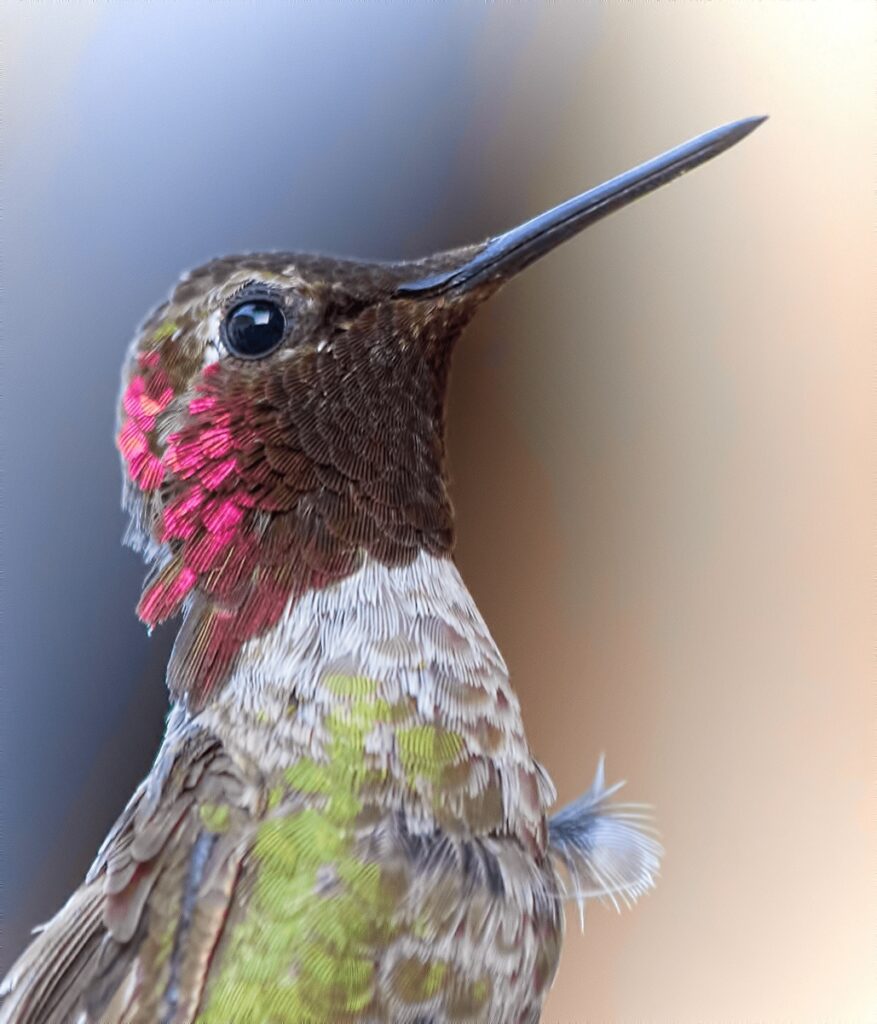
Anna’s Hummingbird
Tiny and fierce, Anna’s hummingbirds are the most common hummingbird in Las Vegas. The males are adorned with striking fuschia feathers on their faces and throats.
As part of their courtship, male stuntmen fly as high as they can (sometimes up to 130 feet in the air!) before diving down. Females take care of their young on their own and collect spiderwebs to line their tiny nests.
If you put out a hummingbird feeder, perhaps you’ll find Anna’s hummingbirds sparring for nectar. You would fight too if you needed to eat 50% of your body weight in nectar every day!
Cooper’s Hawk
These hawks have broad, round wings and long tails as they fly swiftly through the tree canopy in neighborhoods and parks. Cooper’s hawks use speed to snag prey like sparrows, doves, and ground squirrels, often squeezing their prey to death in their sharp talons.
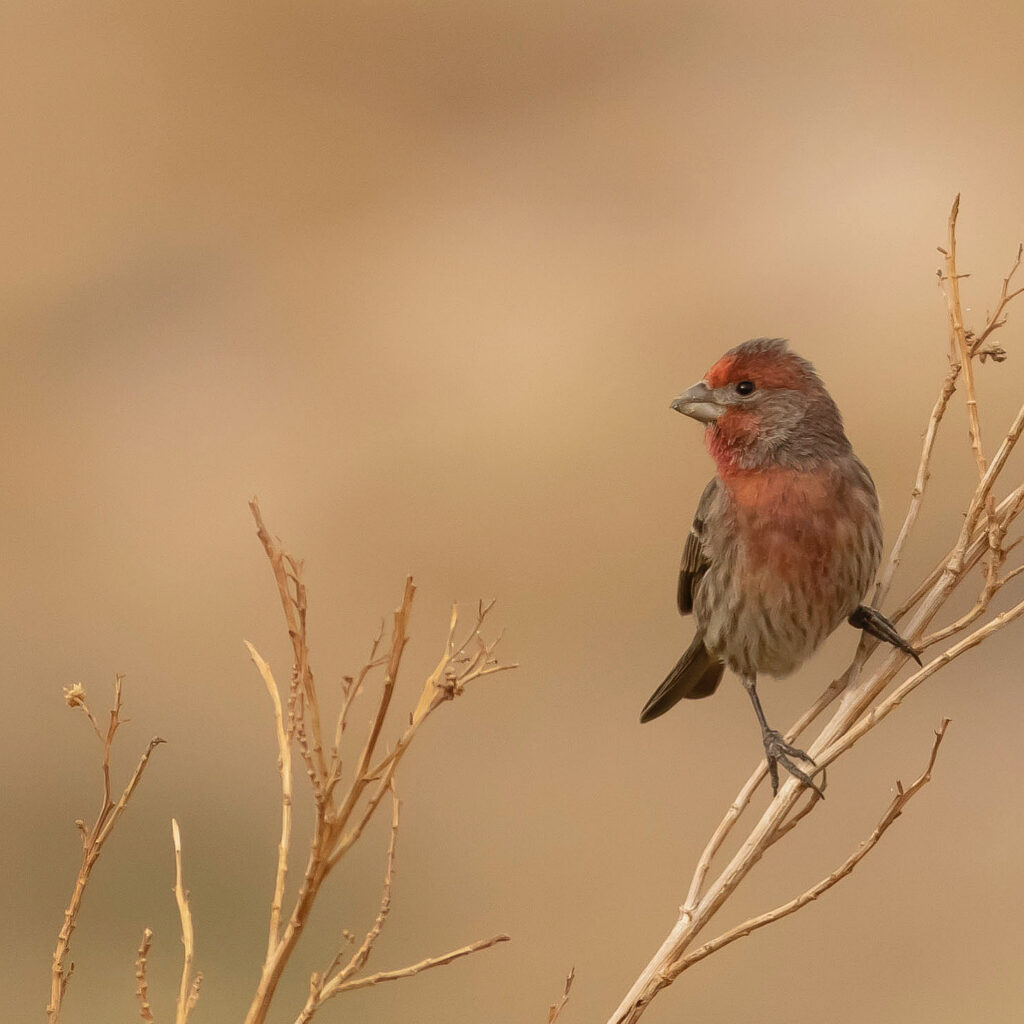
Adult Cooper’s hawks have striking red eyes and their breasts are streaked with reddish-brown bars. You might find them perched in trees like pines and oaks in neighborhoods and parks, as this is prime real estate for nest building.
Another reason Cooper’s hawks have adapted to our urban environments is that our parks and neighborhoods attract their favorite food: pigeons and mourning doves.
House Finch
These feisty little birds are very common at neighborhood parks and bird feeders, where they squabble for seeds, buds, and fruit. Thriving in suburban habitats, they’re found around yards, parks, and buildings.
Female house finches are grayish-brown, whereas males are varying shades of red around the upper breast, belly, tail, and face. The red in male house finches depends on their diet and can change depending on what they eat. So the more red pigment that’s in their food, the more red the finches will be. And since females mate with the reddest males, competition is on to be the fittest and most colorful the males can be.
(Article continues after the ad)
Please follow our fantastic site sponsors! They make content like this possible! 🙂
Great-tailed Grackle
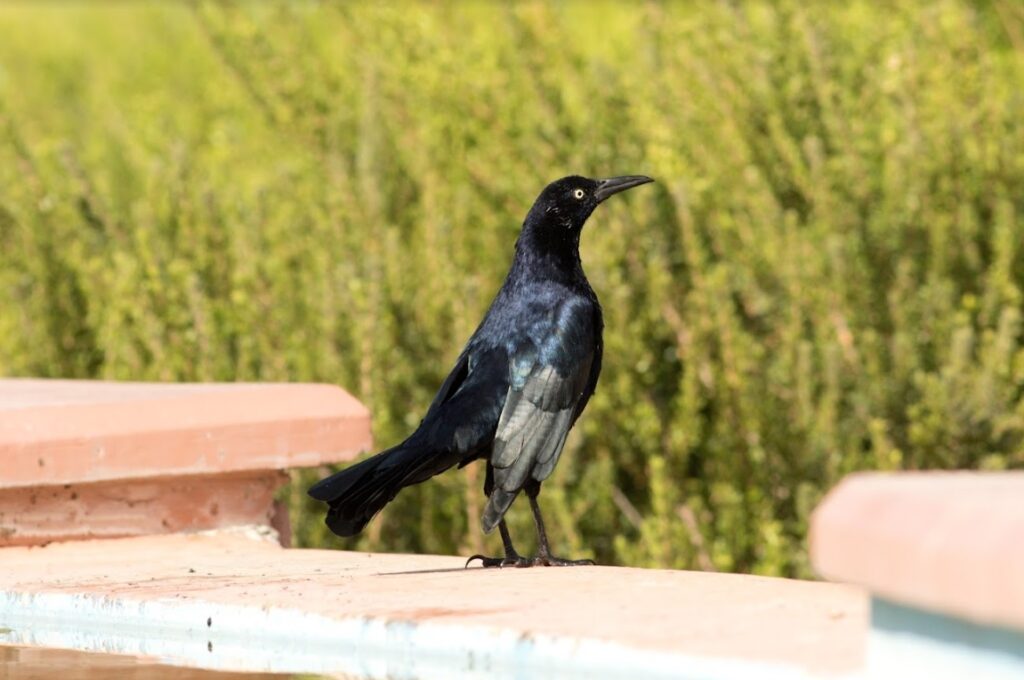
Great-tailed Grackles always have something to say. Social and loud, these birds can flock in the hundreds. Look for grackles digging through dumpsters and stomping around parking lots.
Sleek and shiny against concrete, the males have black iridescent feathers that shimmer in the sunlight, whereas females are dark brown on the top half of their body and paler brown below.
Both males and females have bright, intelligent yellow eyes and are highly expressive in their body movements. Males will posture to one another by sticking their heads all the way back or puffing out their feathers, which might be grackle-speak for “look at me! I’m the best!”
Mourning Dove
Far from being in mourning, male mourning doves sing in the springtime to attract a mate. This bird’s low cooing calls are a common sound throughout the Las Vegas Valley, and the male’s sorrowful tune attracts mates so well that he’ll defend his “cooing perch” from other males. Look for mourning doves perched on walls and buildings or foraging for seeds low to the ground at parks. But don’t be fooled by the mourning dove’s demure looks, these birds can take off at speeds up to 55 mph with a great whistling noise from their wings, making them hard to catch for hungry hawks.
Northern Mockingbird

Have you heard a bird singing at night? If it’s springtime, chances are that’s a male Northern Mockingbird proclaiming his territory under the stars and serenading his lady mockingbird in the moonlight. Often starting in February as the days get longer, male mockingbirds sing for hours on end, so look for a medium-sized gray bird with a long tail perched on rooftops and trees.
Renowned vocal mimics, mockingbirds can learn up to 200 songs of other bird species, as well as other noises like car alarms, dog barks, and creaky gates. Fiercely territorial, these musical birds will swoop and dive bomb people and pets who get a little too close to their nests or favorite pyracantha-berry patch, flashing their white wing bars.
Rock Pigeon
From the way they strut to the way they coo, pigeons can provide hours of avian entertainment. These domesticated doves were once our cherished companions, bred in many colors and feather styles. Over time, more and more pigeons escaped or were released and they proliferated as wild birds, adaptable and intelligent. When looking at wild pigeons, try to notice the rainbow of colors in a flock, and perhaps you’ll even see a red or white color variation. Pigeons are also remarkably intelligent and can recognize faces, navigate their way home from any location, and differentiate Monet and Picasso paintings.
Verdin
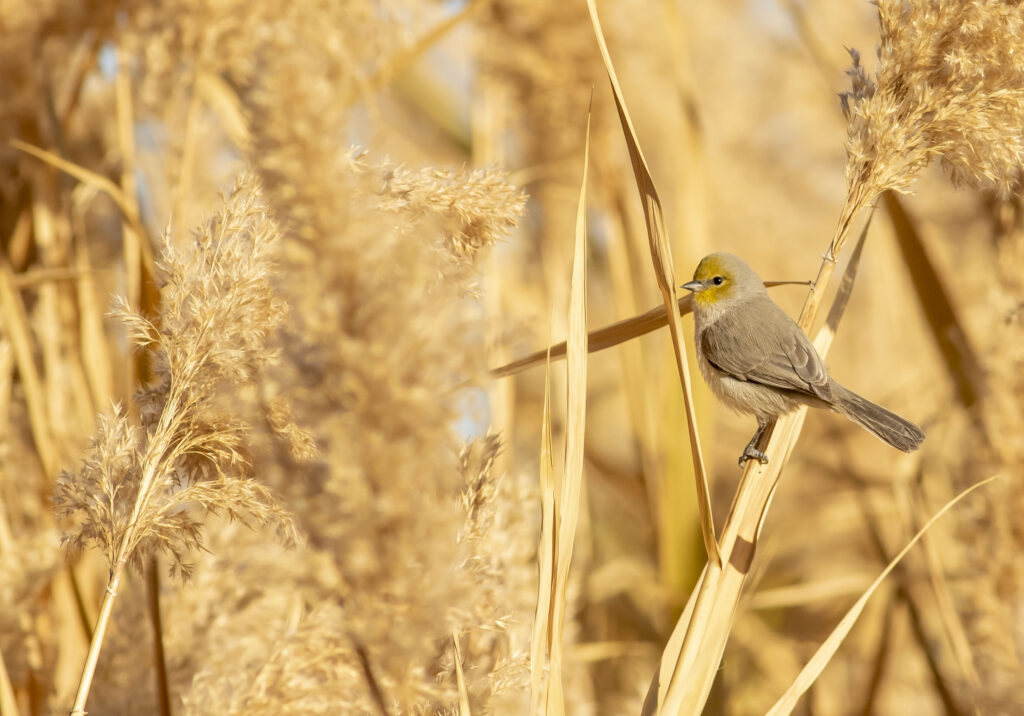
Las Vegas is home to very unique verdins, small songbirds only found in the Southwest. About the size of a finch but with a longer tail, verdins are soft gray with sunny yellow faces and a chestnut wing patch.
They hop through tree canopies, rarely sitting still for long. They’ll hang upside down to catch spiders and insects and even visit hummingbird feeders to nab a little bit of nectar. Like us, verdins want to stay cool during the summer and warm during the winter, so they’re one of the few birds to build nests all year long.
Look for their stick nests in bushes and trees, especially in parks with desert landscaping.
Get in Motion and Go Birding!
Next time you go outside, keep an eye out for the birds you see. What birds have you noticed around your home, work, or local park? What birds capture your attention? For more information on these birds and others you may encounter, you can buy Red Rock Audubon Society’s guide to the most common birds of Southern Nevada or use the map feature on eBird to see what bird species people list near where you live.
You can also read more about birding in Las Vegas in my other article, Let’s Go Birding!
Thank you to our supporters and sponsors!
As always, we want to thank our Patreon’ Cultivator’ supporters and sponsors who help make content like this possible.
The following Patron(s) supported the production of this article:
Crystal Gropp
The following sponsors supported the production of this article:
Viva La Compost & LunaKai Lash



